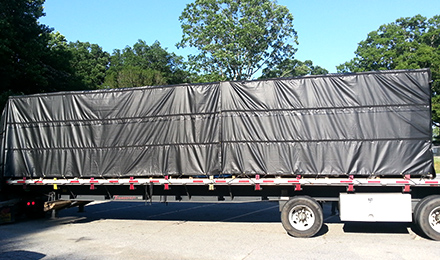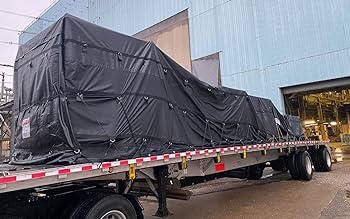In the realm of construction, forestry, and material handling, protecting precious lumber from the elements is paramount. Lumber tarps, or lumber covers, are the unsung heroes that stand guard against the relentless sun, rain, snow, and dust, ensuring that your wood resources remain in prime condition. Crafted with durability and versatility in mind, these innovative covers offer a multitude of benefits that cannot be overlooked. Let’s delve into the key functionalities of lumber tarps and understand why they are an indispensable tool for any industry relying on wood.

I. Weather Protection: The First Line of Defense
1. Rain Resistance:
Lumber tarps are designed to be waterproof, effectively sealing out rainwater that could otherwise cause rot, warping, or mold growth in your wood stacks. Their tightly woven fabric and often reinforced seams create a barrier that keeps moisture at bay.
2. Sun Shield:
Prolonged exposure to direct sunlight can fade and degrade wood, making it brittle and less durable. Lumber tarps act as a protective layer, reflecting UV rays and reducing the impact of solar radiation, preserving the integrity and aesthetic appeal of your lumber.
3. Wind Barrier:
Strong winds can scatter wood piles, causing damage and loss. Lumber tarps, with their secure tie-down points and often reinforced edges, anchor your wood stacks firmly in place, even during stormy weather.
II. Enhanced Durability: Built to Last
1. Heavy-Duty Materials:
Constructed from high-quality fabrics like PVC-coated polyester or canvas, lumber tarps are engineered to withstand the toughest conditions. These materials are resistant to tears, punctures, and abrasions, ensuring a long service life.
2. Reinforced Seams:
Weak seams are a common failure point in traditional tarps. However, lumber tarps feature reinforced stitching or heat-sealed seams that significantly increase their strength and durability, minimizing the risk of leaks or tears.
3. UV Stabilization:
To combat the damaging effects of sunlight, many lumber tarps incorporate UV stabilizers into their material composition. This technology prevents the fabric from degrading under prolonged exposure to sunlight, maintaining its structural integrity and colorfastness.

III. Convenience and Versatility: Designed for Ease of Use
1. Installation facile :
Lumber tarps come with clear instructions and often feature grommets, loops, or tie-down straps that simplify the installation process. Whether you’re covering a small pile or a vast warehouse full of lumber, these covers can be quickly and securely fastened.
2. Portability:
Lightweight yet sturdy, lumber tarps are designed for easy transport and storage. This versatility allows you to quickly move them from one job site to another, ensuring your wood assets are always protected.
3. Customizable Sizes:
Recognizing that every lumber stack is unique, manufacturers offer a range of standard sizes as well as custom-made options. This ensures that you can find a tarp that perfectly fits your specific needs, maximizing protection and minimizing waste.
IV. Cost-Effective Solution: Protecting Your Investment
1. Longévité :
With proper care and maintenance, lumber tarps can last for years, providing a cost-effective solution for safeguarding your wood inventory. By preventing weather-related damage, they help maintain the value of your lumber, reducing the need for costly replacements.
2. Reduced Waste:
By keeping lumber dry and protected, tarps minimize the risk of mold, rot, or insect infestation, which can render wood unusable. This not only saves you money on waste disposal but also ensures that your resources are used efficiently.
3. Improved Workplace Safety:
A well-organized and protected lumber yard is a safer work environment. Lumber tarps help maintain order, reduce trip hazards, and protect workers from exposure to harsh weather conditions, enhancing overall job site safety.
V. Environmental Considerations: Sustainable Protection
1. Recyclable Materials:
Many modern lumber tarps are made from recyclable materials, aligning with sustainable practices. When they eventually reach the end of their service life, these tarps can be recycled, minimizing their environmental footprint.
2. Réduction de l'empreinte carbone :
By protecting lumber from weather-related damage, tarps help extend the lifespan of wood, reducing the need for new timber harvesting. This, in turn, conserves natural resources and lowers the carbon emissions associated with logging and transportation.
Conclusion
In conclusion, lumber tarps are a versatile and essential tool for anyone working with wood. Their ability to shield lumber from the elements, combined with their durability, convenience, and cost-effectiveness, make them an invaluable investment. Whether you’re managing a large-scale construction project, operating a lumber yard, or simply storing wood for personal use, investing in high-quality lumber tarps is a smart decision that will protect your assets and support your bottom line.
